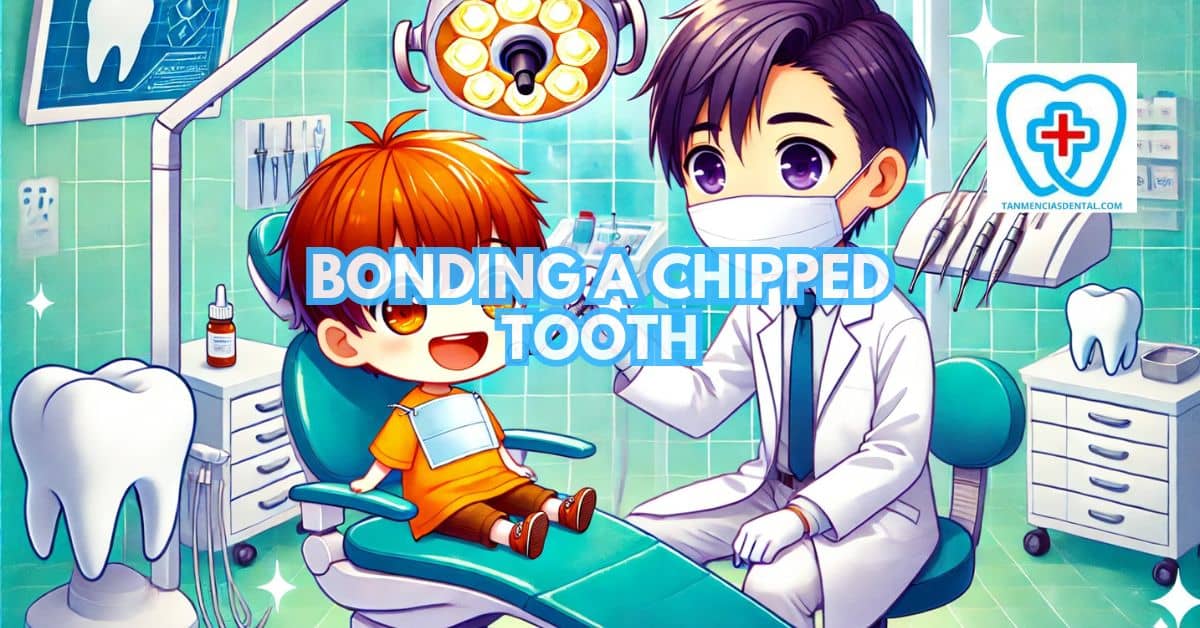Bonding a chipped tooth is a widely used dental procedure that repairs minor damage using tooth-colored resin.
It is both non-invasive and affordable, making it a popular choice for many.
The treatment restores the appearance and functionality of the damaged tooth, often improving the patient’s confidence.
Many prefer this method because it can usually be completed in just one dental visit.
We’ll discuss the benefits, drawbacks, and essential details to help you decide if bonding is the right choice for your needs.
1. Understanding Bonding a Chipped Tooth: What Is It?
Dental bonding involves the application of a resin material to the damaged area of a tooth.
The resin is carefully shaped to match the natural contour of the tooth, then hardened with a curing light.
This process ensures a secure bond and a natural look.
Bonding is a versatile option, suitable for both minor cosmetic improvements and small structural repairs.
Dentists often recommend bonding because it’s efficient, cost-effective, and produces immediate results without the need for extensive preparation.
🦷 Can You Brush Your Teeth Without Toothpaste?
2. The Benefits of Bonding a Chipped Tooth
Bonding offers a simple way to improve the appearance of chipped teeth, restoring their natural shape and color.
Compared to other treatments like veneers or crowns, bonding is significantly more affordable, making it an accessible option for many.
It also requires minimal removal of the natural tooth structure, preserving its integrity.
The procedure is quick, typically completed in under an hour for a single tooth.
For those seeking a non-invasive and economical solution, bonding is often an excellent choice.
🦷 The Benefits of Bonding Chipped Front Teeth: A Quick and Affordable Smile Makeover
3. How Long Does Bonding a Chipped Tooth Last?
Bonded teeth generally last between 3 and 10 years, depending on factors like oral hygiene and daily habits.
Proper care, such as brushing and flossing regularly, can help maintain the bond.
Avoiding activities like chewing on hard objects or grinding teeth will also prolong its durability.
Regular dental checkups allow your dentist to inspect the bond and address any wear or damage.
While not as long-lasting as veneers or crowns, bonding is a practical option for minor repairs.
🦷 Fun and Creative Ways for Teaching Children Oral Hygiene Habits
4. Is Bonding a Chipped Tooth Painful?
Patients often describe the bonding process as pain-free because it involves minimal alteration of the natural tooth.
The resin is applied to the tooth’s surface without drilling or invasive techniques.
In most cases, anesthesia is unnecessary unless the tooth is unusually sensitive.
The procedure is gentle, and patients can resume normal activities immediately afterward.
If sensitivity is a concern, your dentist may apply a numbing gel for added comfort.
🦷 Choosing the Best Braces Colors to Make Teeth Look Whiter
5. When Is Bonding a Chipped Tooth the Right Choice?
Bonding is ideal for addressing minor chips, small gaps, or slight cracks that don’t compromise the tooth’s overall strength.
It’s not suitable for severe damage or for teeth that endure heavy chewing forces, like molars.
This treatment is often recommended for patients seeking a quick and cost-effective solution to improve their smile.
For those who wish to avoid invasive procedures, bonding is a great alternative.
However, a dental examination is necessary to confirm whether bonding meets your specific needs.
🦷 How to Stop Your Teeth From Hurting With Braces
6. Potential Drawbacks of Bonding a Chipped Tooth
Despite its benefits, bonding has limitations.
The resin material is less durable than porcelain used in veneers or crowns, making it more susceptible to chipping or breaking.
Over time, the bonded area can stain from consuming foods and drinks like coffee, tea, or wine.
This discoloration may require touch-ups to maintain the tooth’s appearance.
Additionally, bonding is not a permanent solution and may need periodic replacement.
It’s best suited for minor cosmetic improvements rather than major structural repairs.
🦷 The Rise of Branded Toothbrushes: Are They Better Than The Generic Ones?
7. The Cost of Bonding a Chipped Tooth: What to Expect
The cost of bonding varies based on factors like the extent of damage and the dentist’s expertise.
On average, patients can expect to pay between $100 and $400 per tooth.
While more affordable than veneers or crowns, bonding still delivers a natural and aesthetically pleasing result.
Some dental insurance plans may cover part of the cost if the procedure is necessary for functional reasons.
Discussing costs and options with your dentist beforehand ensures clarity and proper budgeting.
🦷 A Parent’s Guide to Dental Care for Kids: From Drool to Dazzling
8. The Bonding Procedure: What Happens During the Treatment?
The bonding process begins with selecting a resin shade that matches your natural tooth color.
The dentist prepares the tooth by roughening its surface and applying a conditioning liquid to enhance adhesion.
The resin is then molded onto the tooth, shaped to restore its natural contour.
After achieving the desired shape, the material is hardened using a special curing light.
Finally, the dentist polishes the tooth to ensure it blends seamlessly with the surrounding teeth.
🦷 Dental Care in the Philippines: Why It’s Becoming a Popular Destination for International Patients
9. Bonding vs. Other Tooth Repair Options: Which Is Better?
Compared to veneers and crowns, bonding is quicker, more affordable, and less invasive.
However, it’s not as durable or resistant to staining as veneers, which may be better for long-term cosmetic solutions.
Crowns offer greater strength and protection but require more extensive preparation of the tooth.
Bonding is an excellent choice for minor repairs and aesthetic enhancements.
For significant damage or structural concerns, other treatments might provide a more durable solution.
🦷 Understanding Severe Toothache Symptoms: What You Need to Know
10. Caring for a Bonded Tooth: Tips for Longevity
To maintain a bonded tooth, practice good oral hygiene by brushing twice daily and flossing regularly.
Avoid biting hard objects like ice or pens, as these can damage the bond.
Limiting foods and drinks that stain, such as coffee and soda, helps preserve its appearance.
Regular dental checkups are essential for monitoring the bond and addressing any wear or staining.
By following these steps, you can enjoy the benefits of a bonded tooth for years to come.
🦷 Comprehensive Dental Care in Marikina City
👨⚕️ Conclusion
Bonding a chipped tooth is a reliable option for minor cosmetic and structural dental issues.
It offers a quick, affordable, and minimally invasive way to restore both function and aesthetics.
While it may not be as durable as other options, its accessibility and simplicity make it a practical choice for many.
Consulting with your dentist ensures the treatment aligns with your dental health needs and goals.
With proper care, bonding can enhance your smile and confidence for years.
😊 Self-Promotion
Looking for exceptional dental care in Parang, Marikina City?
Visit Tan-Mencias Dental Clinic, where we offer top-notch services with a warm and friendly touch!
For any questions or concerns, feel free to call us at 0917-145-1074, send a message through our Facebook page, or use the contact form on our website.
We’re here to make your dental visits convenient and comfortable.
Your perfect smile is just one appointment away—come see us soon!

